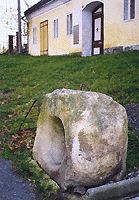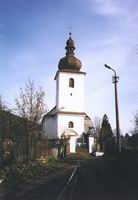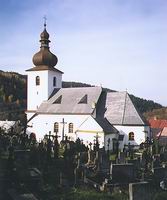


The former settlement near the finding places of gold Rejštejn lies 15 km south of the town Sušice near the mouth of the Losenice river into the Otava river, on the border of the National Park Šumava (Bohemian Forest), 568 m a.s.l.
The upper reaches of the Otava river and its tributaries were frequent places of gold washing in past. The small settlement called Rejštejn (from German "Reichenstein" = "rich stone") arose here in the Middle Ages. This village with the neighbouring small town Kašperské Hory comprised one unit at that time and in 1584 Rejštejn became an autonomous mining town. After the termination of gold mining in the 17th century the glass-blowing developed here. The glassworks called Klášterský Mlýn ("Monastic Mill"), founded in 1836, was the most important glassworks in the Austro-Hungarian Empire between 1878 - 1908. It obtained a lot of prizes for the technical and artistic quality of its products. The glassworks worked till 1947.
The most interesting sight of the village is the St. Bartholomew's Church, which is first mentioned in 1570. It was reconstructed in the Baroque style in 1792. The bell in the dome originates from the 14th century.
The grind-stone with a small hollow ("dish") originates in the medieval finishing mill for the golden ore and it commemorates the gold washing in Rejštejn.
 |
 |
 |